 Yamaha aerox NS50 - Owner's Manual > Periodic maintenance and Adjustment
Yamaha aerox NS50 - Owner's Manual > Periodic maintenance and Adjustment
Periodic inspection, adjustment, and lubrication will keep your vehicle in the safest and most efficient condition possible.
Safety is an obligation of the vehicle owner/operator. The most important points of vehicle inspection, adjustment, and lubrication are explained on the following pages.
The intervals given in the periodic maintenance charts should be simply considered as a general guide under normal riding conditions. However, depending on the weather, terrain, geographical location, and individual use, the maintenance intervals may need to be shortened.
WARNING
Failure to properly maintain the vehicle or performing maintenance activities incorrectly may increase your risk of injury or death during service or while using the vehicle. If you are not familiar with vehicle service, have a Yamaha dealer perform service.
WARNING
Turn off the engine when performing maintenance unless otherwise specified.
- A running engine has moving parts that can catch on body parts or clothing and electrical parts that can cause shocks or fires.
- Running the engine while servicing can lead to eye injury, burns, fire, or carbon monoxide poisoning - possibly leading to death. See page 1-3 for more information about carbon monoxide.
WARNING
Brake discs, calipers, drums, and linings can become very hot during use. To avoid possible burns, let brake components cool before touching them.
TIP
- The annual checks must be performed every year, except if a kilometer-based maintenance, or for the UK, a mileage-based maintenance, is performed instead.
- From 30000 km (17500 mi), repeat the maintenance intervals starting from 6000 km (3500 mi).
- Items marked with an asterisk should be performed by a Yamaha dealer as they require special tools, data and technical skills.
Periodic maintenance chart for the emission control system

General maintenance and lubrication chart
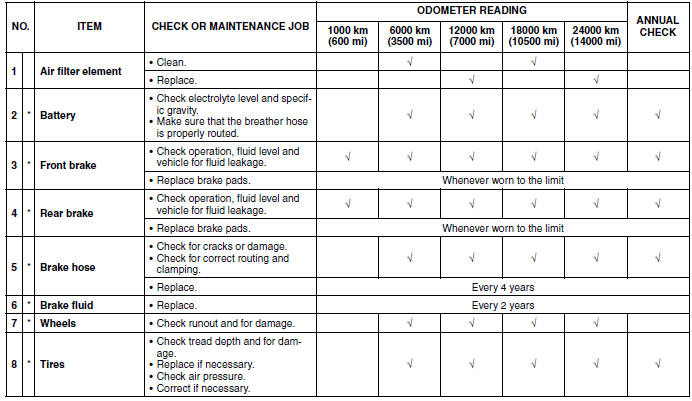
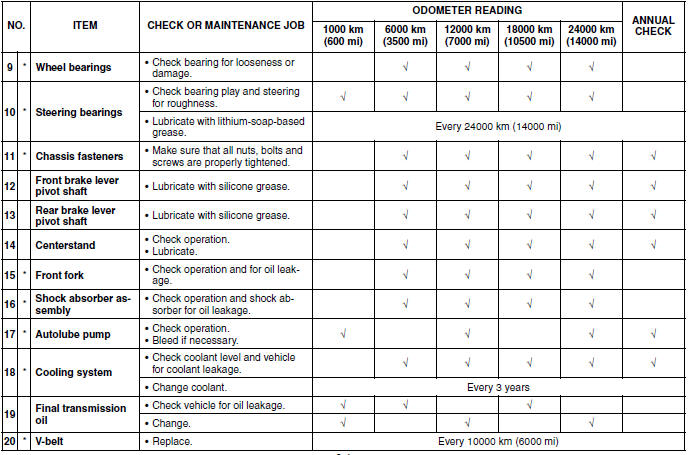

TIP
The air filter needs more frequent service if you are riding in unusually wet or dusty areas.
Hydraulic brake service
- Regularly check and, if necessary, correct the brake fluid level.
- Every two years change the brake fluid.
- Replace the brake hoses every four years and if cracked or damaged.
Removing and installing the cowling and panel
The cowling and panel shown need to be removed to perform some of the maintenance jobs described in this chapter. Refer to this section each time the cowling or panel needs to be removed and installed.

- Cowling A
- Panel A
Cowling A
To remove the cowling
Remove the screws, and then take the cowling off.
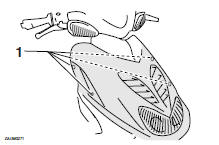
- Screw
To install the cowling
Place the cowling in the original position, and then install the screws.
Panel A
To remove the panel
- Open the storage compartment.
- Remove the screw, and then take the panel off.
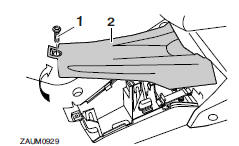
- Screw
- Panel A
To install the panel
1. Place the panel in the original position, and then install the screw.
2. Close the storage compartment.
See also:
 Yamaha aerox NS50 - Owner's Manual > Braking
Yamaha aerox NS50 - Owner's Manual > Braking
WARNING Avoid braking hard or suddenly (especially when leaning over to one side), otherwise the scooter may skid or overturn. Railroad crossings, streetcar rails, iron plates on road construction sites, and manhole covers become extremely slippery when wet. Therefore, slow down when approaching such areas and cross them with caution. Keep in mind that braking on a wet road is much more difficult. Ride slowly down a hill, as braking downhill can be very difficult.
 Yamaha aerox NS50 - Owner's Manual > Checking the spark plug
Yamaha aerox NS50 - Owner's Manual > Checking the spark plug
The spark plug is an important engine component, which should be checked periodically, preferably by a Yamaha dealer. Since heat and deposits will cause any spark plug to slowly erode, it should be removed and checked in accordance with the periodic maintenance and lubrication chart. In addition, the condition of the spark plug can reveal the condition of the engine.
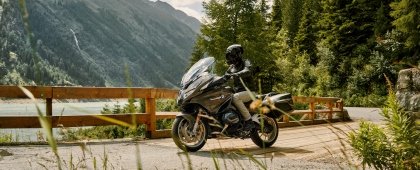 BMW R 1250 RT
BMW R 1250 RT Kymco Agility 50
Kymco Agility 50 Piaggio Liberty 50
Piaggio Liberty 50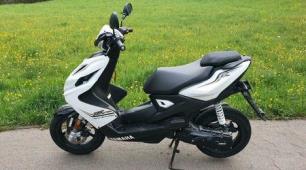 Yamaha aerox NS50
Yamaha aerox NS50 Aprilia SR50R
Aprilia SR50R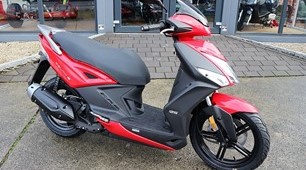 Kymco Agility 50
Kymco Agility 50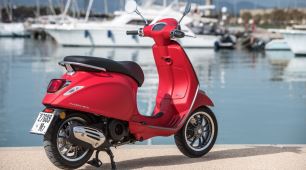 Vespa Primavera 50
Vespa Primavera 50 Peugeot Speedfight
Peugeot Speedfight